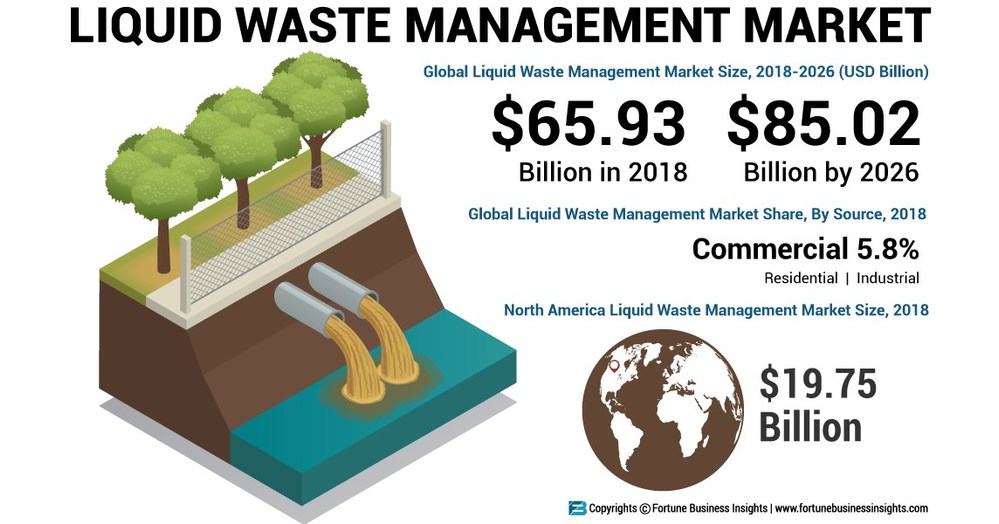The Ultimate Guide To Reclaim Waste
The Ultimate Guide To Reclaim Waste
Blog Article
Reclaim Waste - Truths
Table of ContentsThings about Reclaim WasteThe Definitive Guide for Reclaim WasteThe Single Strategy To Use For Reclaim WasteThe 45-Second Trick For Reclaim WasteGet This Report on Reclaim Waste9 Easy Facts About Reclaim Waste Described

Never put damaging substances down sinks, bathrooms or stormwater drains Materials including gasoline, grease, oil, chemicals and herbicides, and solvents such as paint strippers need to not be poured down sinks, bathrooms or stormwater drains pipes. These compounds are hard to eliminate in the sewer therapy procedure and create pollution issues in our regional rivers.

Although liquid waste is a term that covers a wide variety of materials, there's an excellent reason why leaving its disposal to the experts is recommended. Liquid waste is non-solid product that has no further use and needs to be dealt with and thrown away according to regional, state and government laws.
Rumored Buzz on Reclaim Waste
Examples of fluid waste can consist of wastewater, fats, oils or grease, used oil, liquids, solids, gases or sludges and unsafe house fluids, there are some that are thought about to be much more unsafe than others when it comes to the setting and the wellness of animals and humans alike. It's consequently that each state and area have rigorous guidelines linked to fluid waste monitoring.
Liquid waste can be stored in holding tanks or packaged in drums, intermediate bulk containers or approved tiny containers before either being treated or gotten rid of through outsourced vacuum trucks. Provided the nature of the materials, liquid waste can not go in the general waste stream and there are strict regulations on exactly how to deal with it properly.
(https://justpaste.it/fauht)Depending on a decision of the level of danger, it might be needed to remediate those websites. Additionally, dangerous fluid chemical wastes are managed waste and must be tracked based on the state waste legislation. Under the chain of guardianship and duties, owners are accountable and responsible for waste generated by a business.
Among the core applications for superabsorbent polymers (SAPs) is liquid waste solidification. liquid waste disposal melbourne. SAPs are used by waste management experts to avoid possibly hazardous liquids from going into rivers, groundwater aquifers, and other sensitive settings. Since liquids can rapidly carry pollutants right into ecological receptors and potentially add to geotechnical failures, liquid wastes are practically always banned from disposal in land fills
Fascination About Reclaim Waste
Primarily, totally free liquids are liquids that separate from the strong portion of waste material. Fluid waste can consist of the following: HDD mud and cuttings Garbage dump leachate Wastewater treatment sludge & biosolids Dug up debris Oil and gas drill cuttings Resolving pond muck Hydro Excavation slurry Coal burning residuals/ash Tank base sludge Concrete grinding/polishing slurry Relevant Article: For a practical instance of free fluids separating from waste product, consider the following situation: A waste administration contractor lots a dump vehicle with sludge from a wastewater therapy plant's oygenation basin, throughout a routine upkeep event.
Nonetheless, when the chauffeur arrives at the land fill, he notices water seeping from the sludge and putting from the dump truck. The load was rejected by the garbage dump and the motorist was forced to throw away the waste as a fluid waste at an unique center, which boosted the disposal charges greatly.
We also need to be responsible for the correct disposal of our waste products. It is not enough that we pay waste disposal companies to take treatment of our rubbish.
The 9-Minute Rule for Reclaim Waste

Segregating your waste can begin inside the home. Set apart completely dry and fluid waste as well as edible waste, eco-friendly and non-biodegradable products.
Layer the bottom with dirt to absorb the wet waste. Layer the compost with damp and completely dry waste as well as soil to maintain a balance in between the damp and the dry.
What Does Reclaim Waste Do?
Cover the compost container. Once a week, include soil on top of the compost. To help with faster disintegration, you can also add semi composted soil to the garden compost. Preserve the compost. If you observe the scent is coming to be also solid, include extra papers and paper waste or include more openings to the compost bin to keep the balance of the waste materials.
We also need to be accountable for the correct disposal of our waste products. It is not sufficient that we pay waste disposal firms to take treatment of our rubbish.
Our waste, our obligation. Have you ever before questioned what occurs to your fluid waste after it's collected? Did you recognize that liquid waste can be recycled? As liable citizens, you must understand what occurs to your rubbish and where it goes after it is removed from you. Understanding the liquid waste removal process is essential in helping you to segregate your waste.
The smart Trick of Reclaim Waste That Nobody is Talking About
Segregating your waste can start inside the home. Segregate completely dry and fluid waste as well as edible waste, naturally degradable and non-biodegradable materials.
You can make use of old trash can, pail, garden pot or old plastic drums. Pierce four to five openings in the container so the air can distribute. Layer all-time low with dirt to soak up the damp waste. Start the composting procedure. Layer the garden compost with damp and completely dry waste along with dirt to preserve an equilibrium between the wet and the completely dry.
To promote faster disintegration, you can try these out also add semi composted dirt to the compost. If you discover the scent is ending up being also strong, include additional papers and paper waste or add more holes to the garden compost container to maintain the balance of the waste products.
Report this page